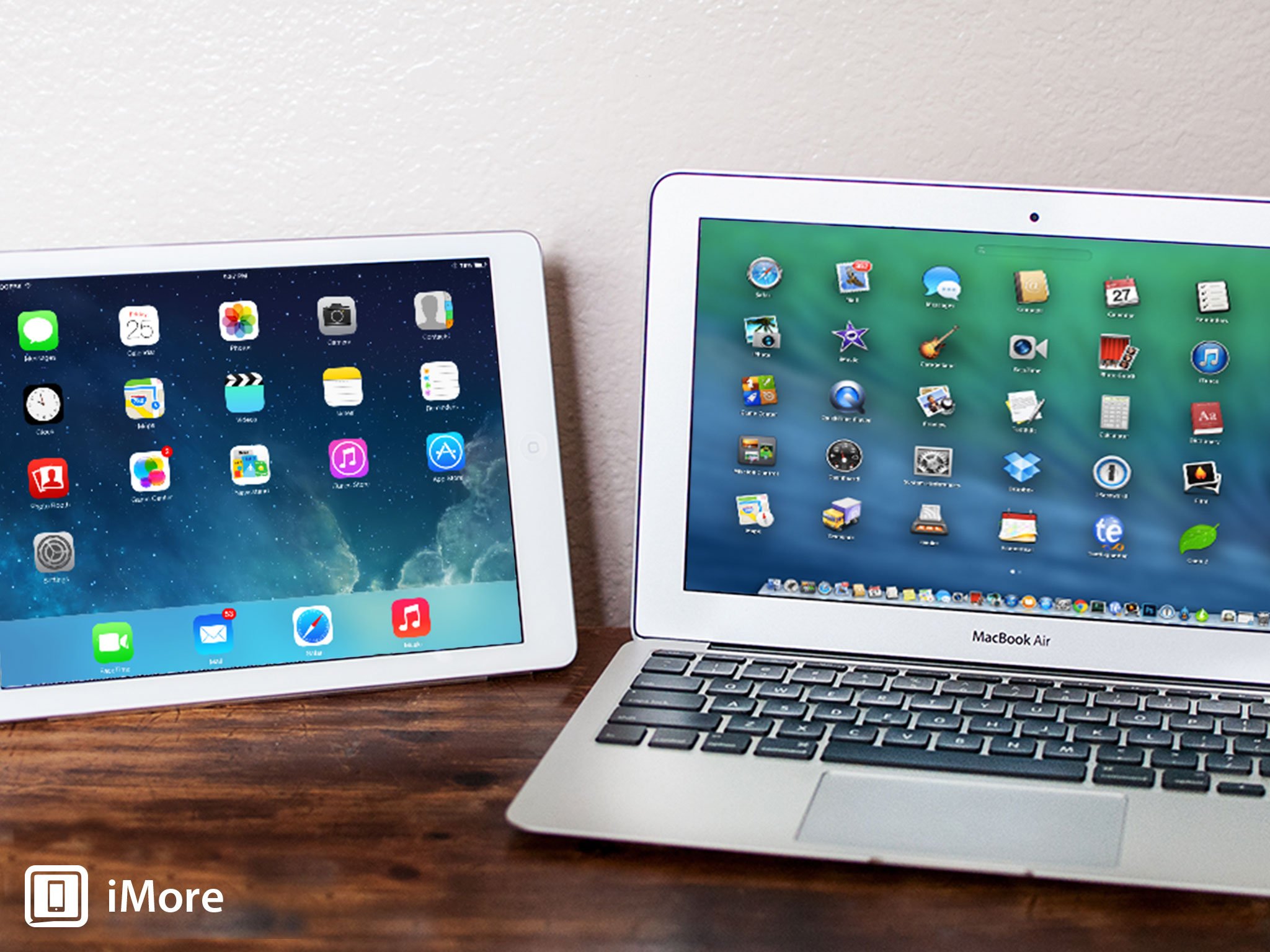
2013 iPad buyers guide: How to choose between Apple's new iPad Air and the 2013 11-inch MacBook Air!
Apple now has two products designated as "Air", the MacBook Air, updated last June with the latest generation Intel Haswell processors, and the brand new iPad Air, introduced in October with a custom Apple A7 chipset. Both are ultra light, super thin, and incredibly long lasting, but one has a keyboard and runs OS X and the other a multitouch and iOS 7. Both can be absolutely killer on a plane, in an office, or around the house. But which one is better for you?
Models and price points

The iPad Air starts at $499 for 16GB and goes up in $100 increments for additional storage, maxing out at $799 for 128GB. For an additional $130, you can get cellular networking as well. With that, the most expensive iPad Air tops out at $929 for 128GB with Wi-Fi + cellular.
The 11-inch MacBook Air starts at $999 for a 1.3GHz Core i5, 4GB of RAM, and 128GB of storage. All three of those things can be upgraded for an additional cost. At the highest end, the most expensive MacBook Air mixes out at $1749 for 1.7GHz, 8GB, and 512GB.
Screen sizes and display densities

The iPad Air ships with a 4:3 9.7-inch 2048x1536 Retina display at 264ppi. That's the largest iOS display Apple currently ships, though it's not quite as dense as the Retina iPad mini or iPhone 5 series. The panel is LED backlit and boasts in-plane switching (IPS) technology for improved viewing angles.
The 11-inch MacBook Air has a 16:9 11.6-inch 1366x768 standard display at 135ppi. Unlike the MacBook Pro, Apple hasn't (yet) brought Retina display to the MacBook Air line. The panel is LED but not IPS.
While the 11-inch MacBook Air has the bigger display (by almost 2-inches diagonally), the iPad Air has a much better and more advanced display.
Processor power and battery life
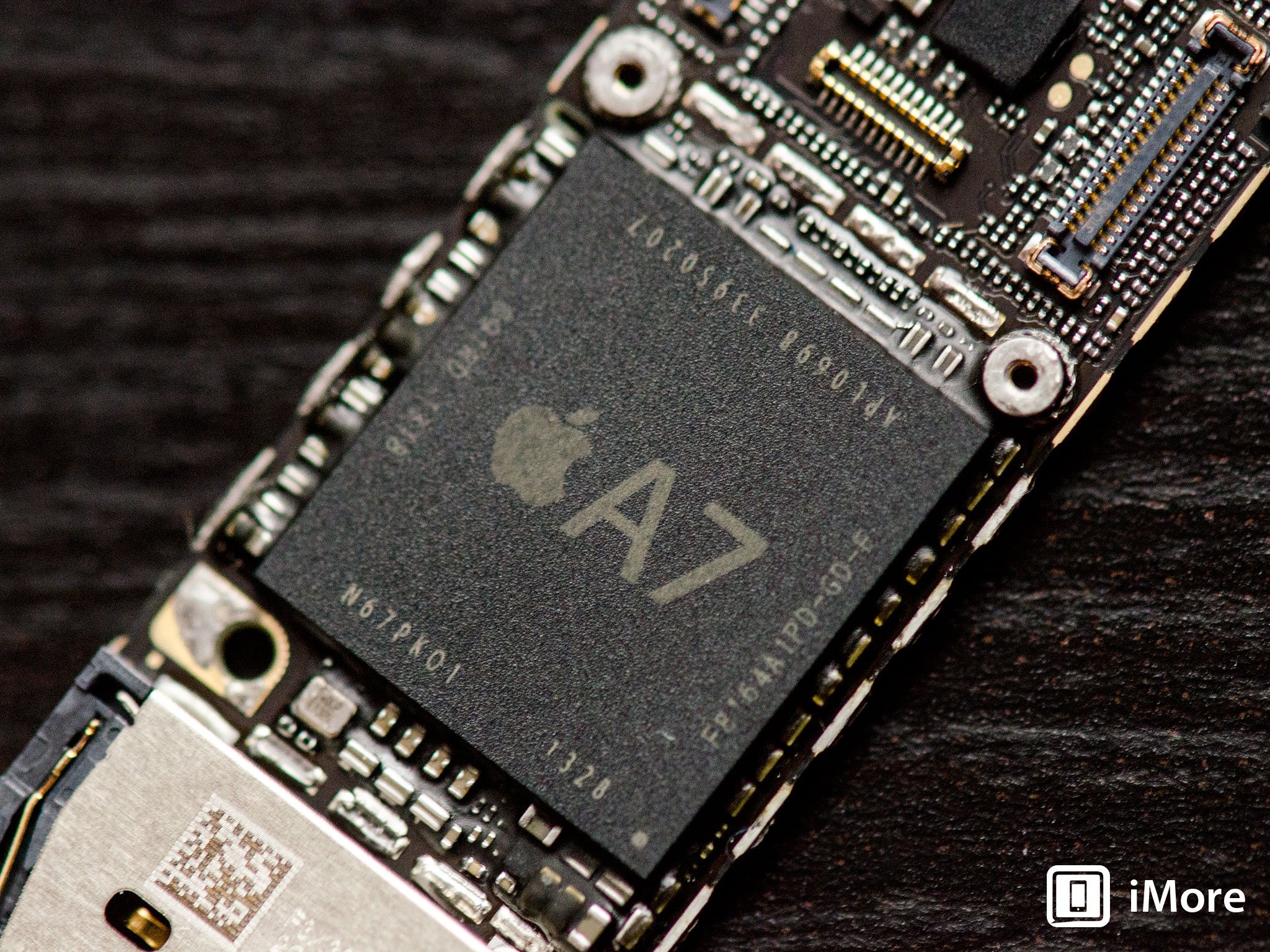
The iPad Air has an Apple A7 chipset, which includes both a custom 64-bit ARMv8-based Cyclone CPU, a PowerVR Series 6 "Rogue" GPU, and an Apple M7 motion coprocessor. Apple lists it as having up to 10 hours of wireless web use or video playback.
The 11-inch MacBook Air has an Intel Core i5 "Haswell" processor with integrated Intel HD Graphics 5000. Apple lists it as having up to 9 hours of wireless web use, 8 ours of iTunes video playback, and up to 30 days of standby battery life.
The iPad Air has one hell of a processor for a mobile device - desktop class, even - but it's still a mobile processor. The MacBook Air has a full on desktop processor, though one geared for portability rather than power. Despite the MacBook's battery optimizations, however, the iPad beats it by an hour or more on battery life.
Input methods
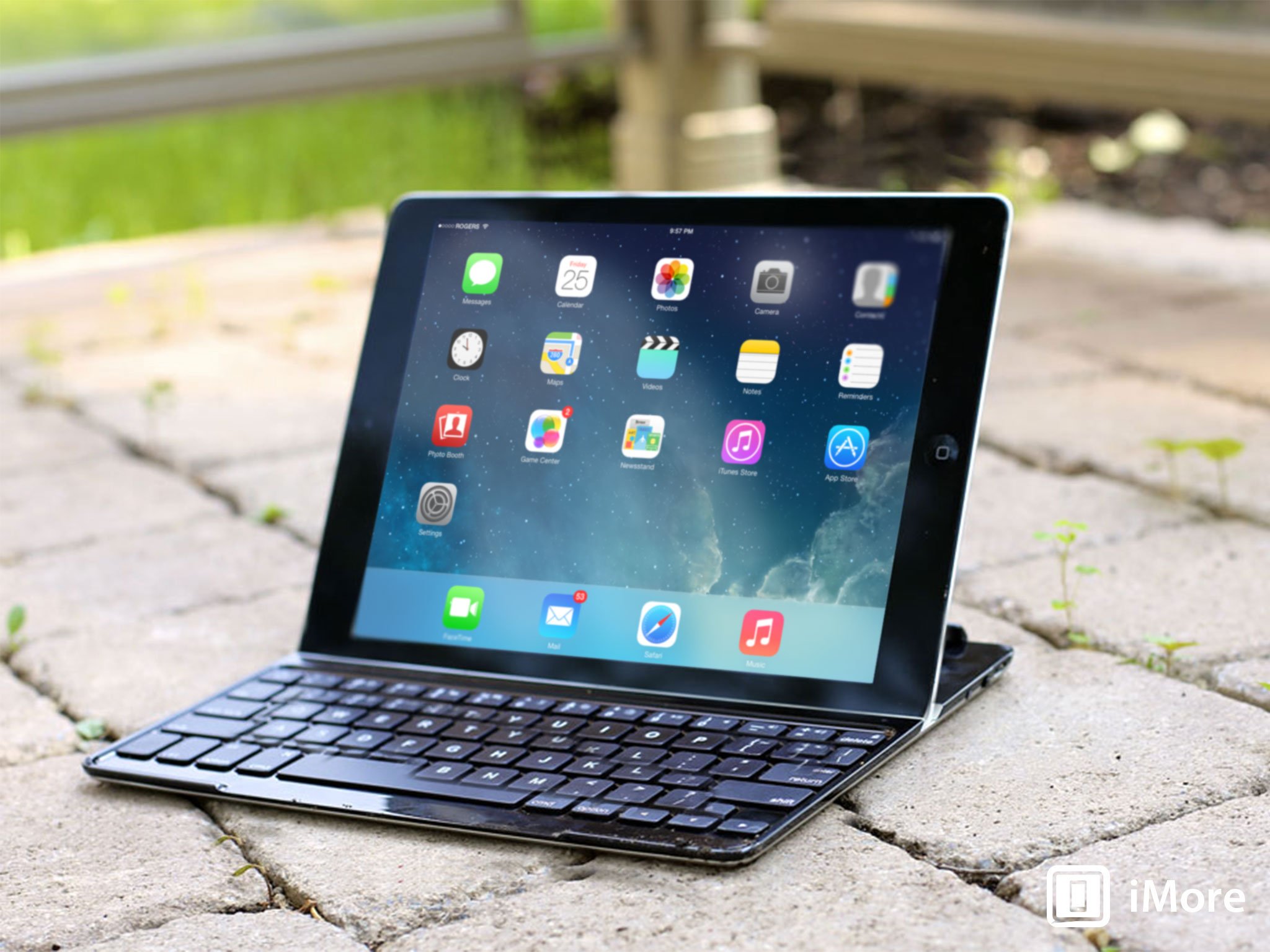
The iPad Air has a multitouch display that's used for direct manipulation. You can tap, swipe, pinch, and otherwise gesture your way though the entire operating system, and all of its apps. For text input, it has a virtual keyboard with character prediction and autocorrect. The iPad can also connect to physical keyboards (sold separately) over Bluetooth.
The 11-inch MacBook Air doesn't have a touch screen but does have a full-sized physical keyboard and a large, multitouch trackpad that allows for all sorts of iOS-style gesture manipulations.
With a keyboard, depending on the size of the keyboard, the iPad Air can handle text entry every bit as well as the 11-inch MacBook Air. The MacBook Air multitouch trackpad can do much of what the iPad's screen can do, but doesn't offer the same kind of direct - finger on object - manipulation as the iPad.
Ports and expansion
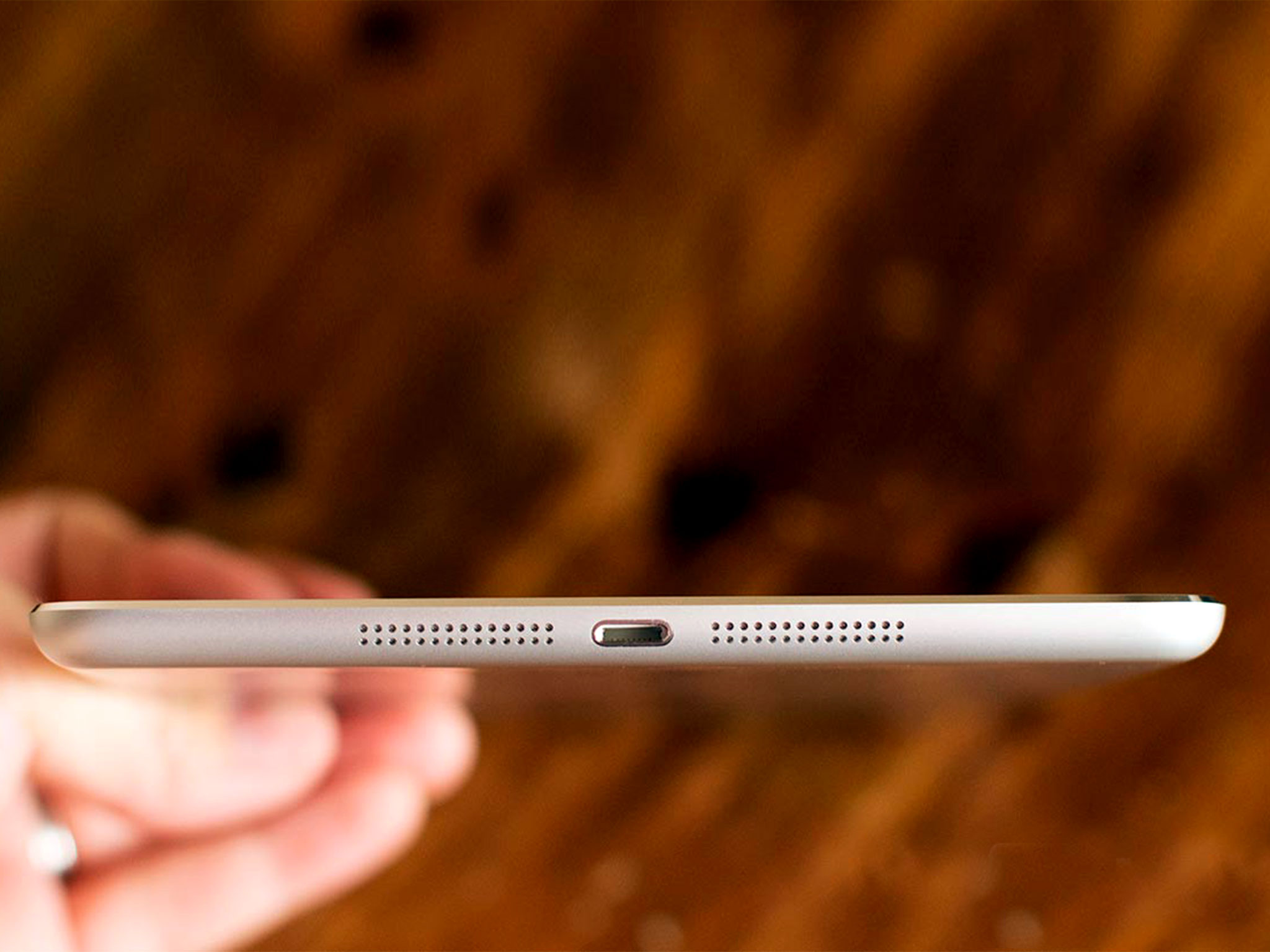
The iPad mini has a Lightning connector. With it, the iPad can use adapters (sold separately) to interface with non-powered USB devices, principally cameras, and SD cards, principally to retrieve photos. It can also connect to VGA and HDMI displays, and iPad-specific accessories for video, music, and more. The iPad cannot connect to storage expansion peripherals.
The 11-inch MacBook Air has two USB 3 ports and a Thunderbolt port. With them, and the appropriate cables or adapters (sold separately), it can interface with most standard computer accessories and peripherals, including displays and external storage devices.
Although both the iPad Air and the MacBook Air are basically hermetically sealed computing appliances, the MacBook is vastly more extensible than the iPad.
Operating systems
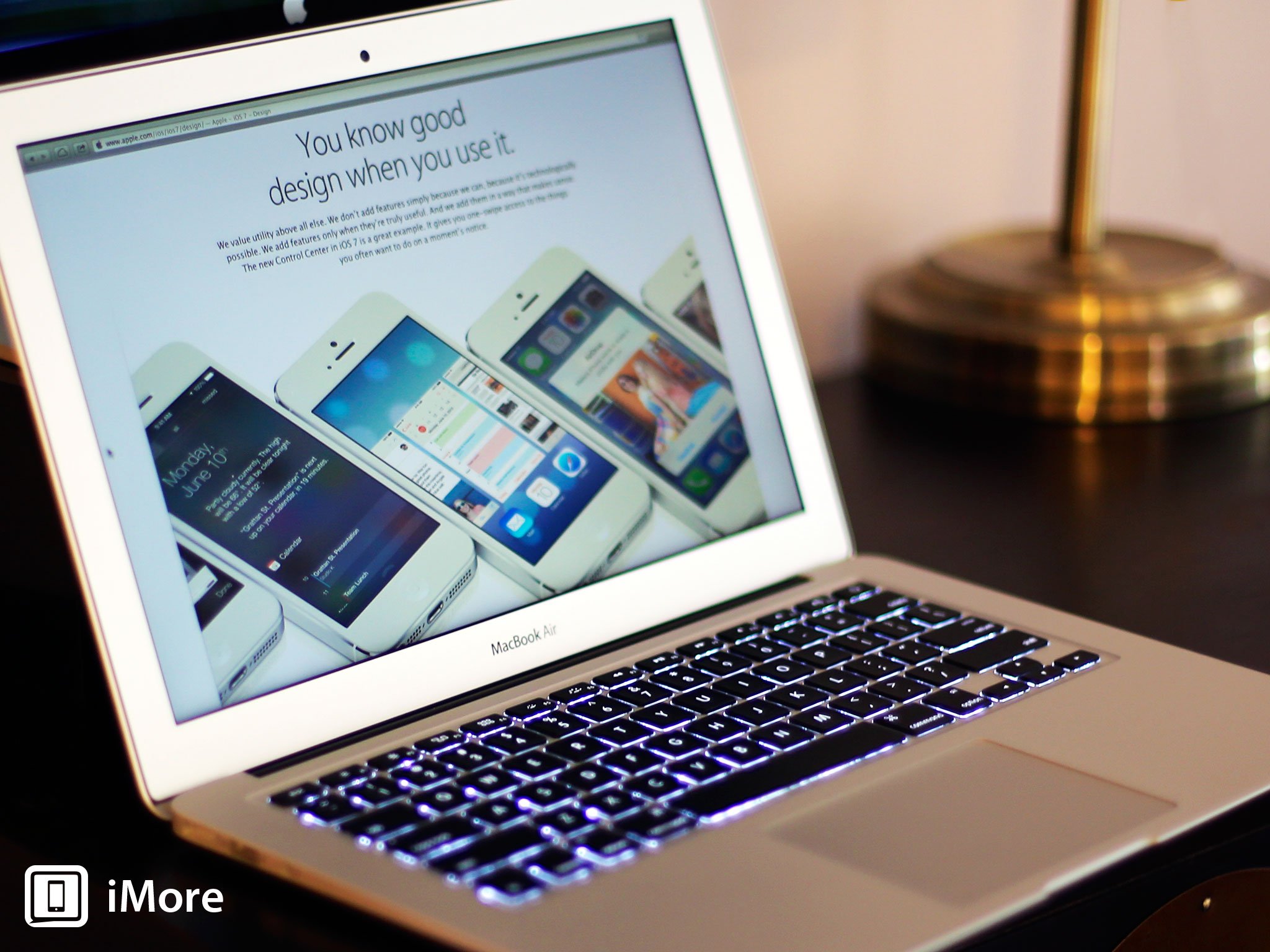
The iPad mini ships with iOS 7, Apple's mobile operating system. It's a single user, full screen operating system with no user-visible file system, and no access to system-level functionality. It is, however, incredibly easy to use, requires little or no maintenance, and can be used to its full potential by almost any mainstream person.
The 11-inch MacBook Air runs Apple's laptop and desktop operating system. It's a multi-user, multi-window operating system the combines all the power of a traditional UNIX 3 environment with a full-on graphical user interface, and even an iOS-like launcher layer. It's not as accessible to the mainstream, but it's more functional for those familiar with computers.
iOS 7 holds to the principle of less is more. You can't do as much with it in theory, but more people can do more with it than they can with more complicated systems like OS X. The different approaches will appeal to decidedly different types of people.
Software and services
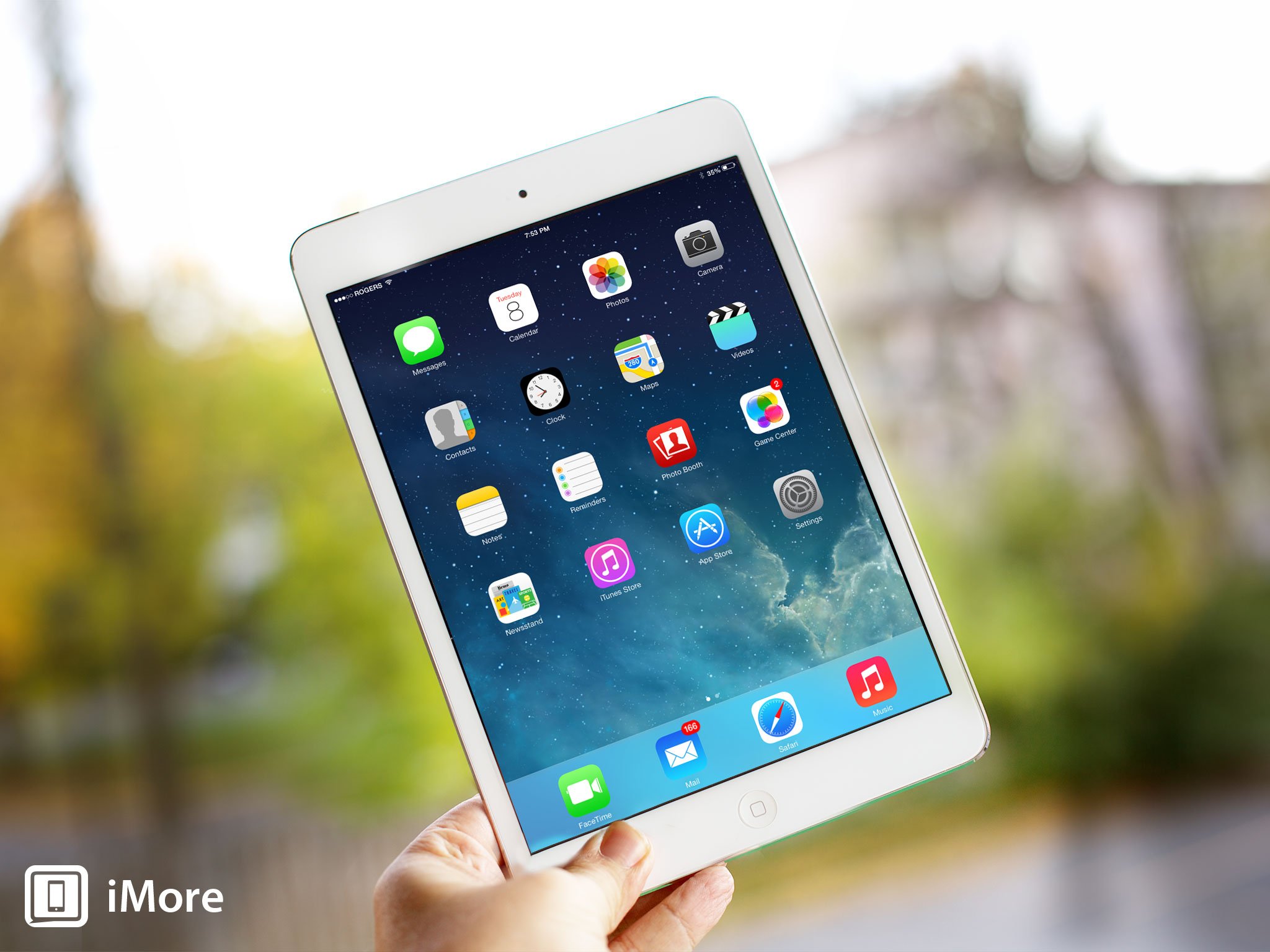
The iPad Air has access to the iOS App Store which boasts over one million apps, almost half of which are now optimized to run on its bigger screen. It includes apps in all categories, from games to productivity, communications to entertainment. Most of them are free or extremely cheap. The iPad can also run HTML5 web apps, but can't download or run apps from internet locations or any app store other than Apple's.
The 11-inch MacBook Air has the Mac App Store, which works similarly to the iOS App Store and provides secure access to all kinds of games, productivity, communications, and entertainment apps. Macs can also run HTML5 web apps, as well as apps downloaded from the web or other app stores. This includes desktop-class apps unavailable to iOS, like Final Cut Pro X, Microsoft Office, Adobe Creative Cloud, and many more.
The iPad and iOS have an incredibly quantity and diversity of apps, at incredibly cheap (or even free) prices. The MacBook and OS X, however, have apps simply unavailable on iOS. Both have access to iCloud, Dropbox, SkyDrive, Google, and other popular online services. OS X, however, can typically integrate more deeply and more flexibly with those services.
Who should get the iPad Air?
The iPad Air is best suited for people for whom traditional computers have always been inaccessible, intimidating, or otherwise off-putting. While the MacBook Air is inarguably more powerful, the iPad Air can empower more people to get more out of it, thanks to the directness of its interface and simplicity of its operations. If sitting in front of a keyboard and mouse ever made you feel lost, you should get the iPad Air.
The iPad Air is also ideally suited for people who want the absolute lightest computing experience possible for use around the house or while traveling. For everything from gaming to working (especially with a hardware keyboard accessory) it can accomplish everything but the most intense computing tasks, in the most highly portable form factor yet devised. If any laptop, no matter how small, is too much, the iPad Air is for you.
(If even the iPad Air is too much, consider the lighter, smaller 7.9-inch Retina iPad mini.)
Who should get the 11-inch MacBook Air?
The MacBook Air is best suited for people who are used to and require a traditional computing experience. From advanced keyboard shortcuts to drag-and-drop workflows, to multiple users, to Terminal, to... you get the idea. It's everything you need in a Unix box and modern GUI in the best blend of portability and power currently on the market. If you need to run Photoshop, Pro Tools, Xcode, or other high-end software on the go, you need a MacBook Air.
The MacBook Air is also great for people who want a Mac they can hook up to a big 27-inch Thunderbolt display at work or at home, and still slip into a tiny messenger bag or backpack and take on the road, or into the skies. Thanks to its ports, it can also be hooked into most networks, and most storage, on the market, making it a useable workstation when it needs to be. If you absolutely have to have a laptop, but you want the most minimal laptop possible, look into a MacBook Air.
(If the 11-inch MacBook Air isn't quite enough for you, look into the slightly bigger and more powerful 13-inch MacBook Air, or even the considerably more powerful 13-inch MacBook Pro)
Still undecided?
Some people are mobile first and just want an iPad. Others are computer-first and need a laptop. Still others split the difference and get either an iPad mini and a MacBook, or an iPad Air and an iMac. The great thing about options is that you can find the perfect device, or pair of devices, that best suit your individual needs.
If you're still having trouble choosing between an iPad and a MacBook, jump into our iPad discussion forums or Mac discussion forums and the best community in mobile will happily help you out.
- How to sell - and get the most money for! - your old iPad before upgrading to an iPad Air or Retina iPad mini
- iPad Air and Retina iPad mini: Should you upgrade?
- iPad vs. Galaxy vs. Nexus vs. Kindle vs. Surface: Which tablet should you get?
- iPad Air vs. MacBook Air: Which Apple portable should you get?
- iPad Air vs. Retina iPad mini vs. iPad 2 vs. iPad mini: Which iPad model should you get?
- Silver vs. space gray: Which iPad Air and Retina iPad mini color should you get?
- 16GB vs. 32GB vs. 64GB vs. 128GB: Which iPad Air or Retina iPad mini storage capacity should you get?
- AppleCare+ vs. insurance vs. nothing: Which iPad Air or Retina iPad mini protection plan should you get?
Similar Articles: The Walking Dead Season 4 Don Jon evelyn lozada Jesse Jackson Jr H&m





No comments:
Post a Comment